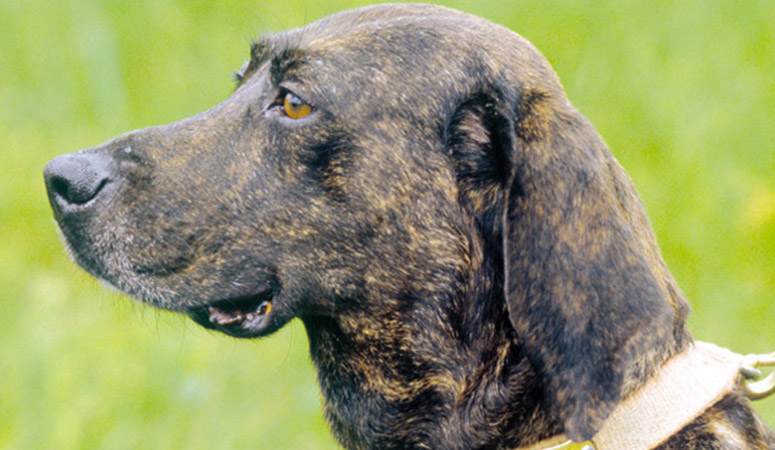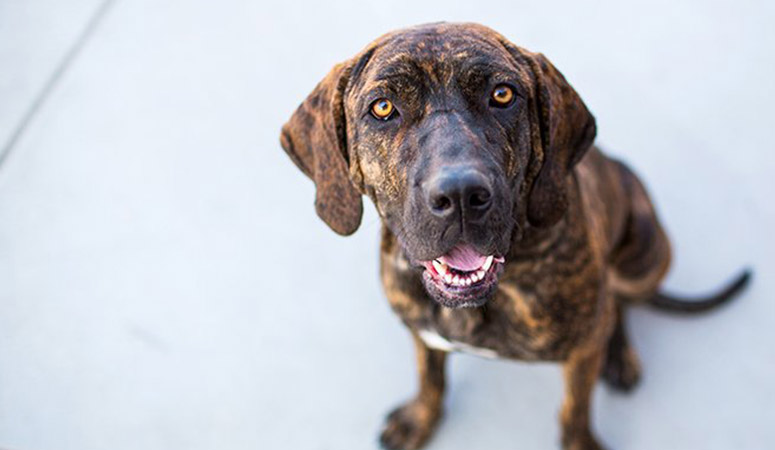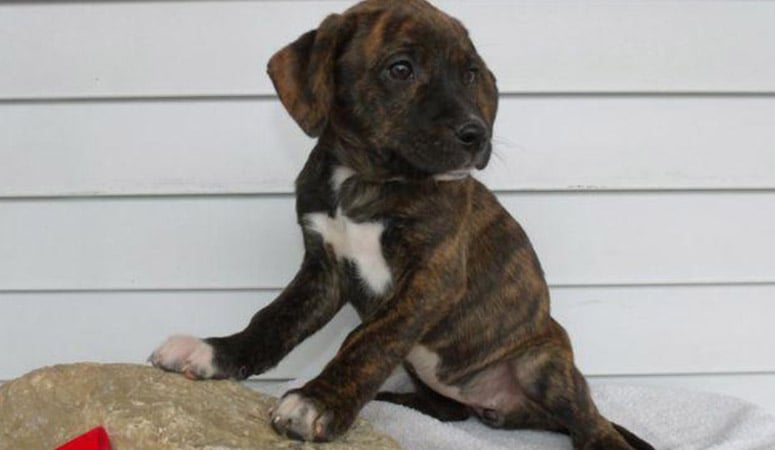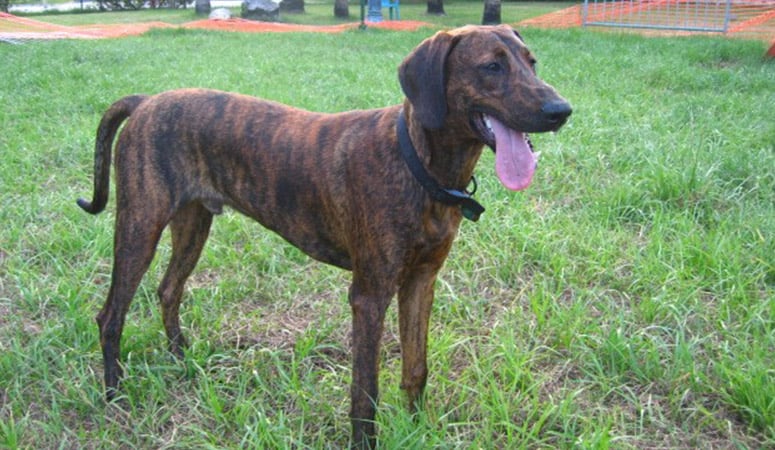Plott Hound
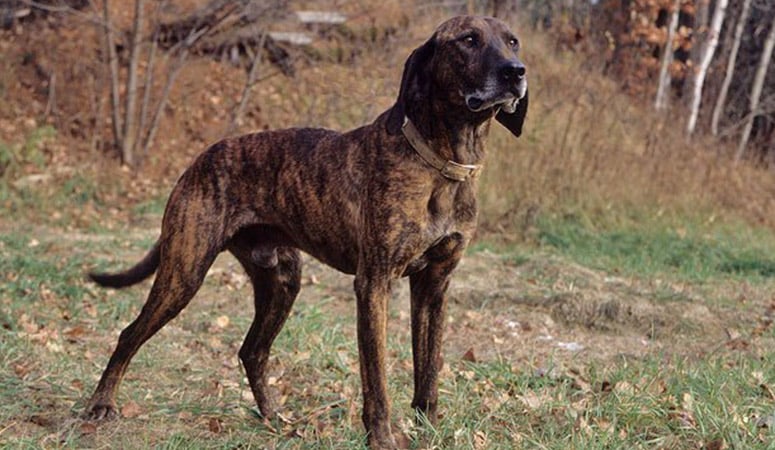
The Plott Hound was developed in North Carolina more than 200 years ago to hunt bear and wild boar, they are rugged, relentless hunting dogs who are mellow gentlemen at home but fearless, determined, and bold at work. The dog’s voice is open and unrestricted, with a loud bugle-like chop or bawl.
| Other Names | Plott, Plott Bear Hound |
| Color | Black, Black and Tan, Blue, Brown, Red |
| Height | Males: 20-27 inches. Females: 20-25 inches. |
| Weight | Males: 50-75 pounds. Females: 40-65 pounds. |
| Life Span | 12-14 years |
| Personality | Loyal, Alert, Intelligent |
| Exercise | Energetic |
| Origin |
| Popularity | #177 |
| Groom Needs | Occasional |
| Kids Friendly | Yes with supervision |
| Dog Friendly | Yes |
| Watch Dog | |
| Family Dog | Yes |
| Litter Size | 6-10 |
Plott Hound Pictures
Plott Hound Video
Introduction
The Plott Hound presents the picture of a dog bred for stamina, strength, and speed. They appear to be very agile and energetic and pack the right amount of muscle and stock to pull these off. Plott Hounds were originally bred as hound dogs and, unlike most hound dogs, they lack the baggy skin appearance. The coat of the Plott Hound is fine or medium in texture, of either short or medium length, and appears glossy and smooth. They come in a distinct brindle coat, with varieties of tan, red, yellow, black, gray, blue, or slate brindles. Intelligent, courageous, and full of determination, the Plott Hound is a loyal member of the family.
Male Plott Hounds stand 21-25 inches from shoulder to paw and weigh 50-65 pounds. A standard female should stand 20-23 inches at the shoulder and weigh 40-60 pounds at the weighing scale. The Plott Hound is a bona fide hound breed. It has an average lifespan of 11-14 years.
Living with Plott Hound
It is easy to groom for Plott Hounds. A good brushing every week with a hound mitt or a nubbly glove that fits over your hand, or rubber crush brushing would be helpful to leave the coat shiny. And an occasional bath, or as needed, is useful to keep your dog from having a doggy odor.
It is suggested to check and clean the dog’s ears every week to prevent infections because the Plott’s floppy ears can block air circulation. Brush the dog’s teeth several times a week to remove tartar buildup and the bacteria that lurk inside it. The daily brush is better to keep a fresh breath and prevent gum disease. The rest is basic care. Trim the nails as needed, usually every week or two.
Plott Hounds are tough, relentless athletes that require lots of exercise and outdoor time, and they are very active outside. It is suggested to give the Plott Hound about one hour exercise every day, if you don’t have several fenced acres that they can explore and sniff you can break it up into two or three walks or playtimes, regular exercise is helpful to keep the dog mentally and physically healthy. The Plott is a walking companion, not a jogger. Because the Plott Hound is extremely prey driven, they should remain on a leash when they are not in securely and fenced areas.
Generally, it is suggested to feed the Plott Hound with two to three cups of high-quality dry dog food every day, divided into two meals. Considering the Plott is an avid hunter, he needs specialized food. It is best to feed dry kibble as this can cut down on veterinary bills associated with tooth decay and gum disease. More importantly, the food amount should depend on the dog’s weight, size, age, and activity level.
Some dogs are easy to get overweight, so you need to watch their calorie consumption and weight level all the time. Treats may be an important aid in training, but excessive intake can lead to obesity. Also, owners need to distinguish which human food is safe for dogs and which are not. If you have any problems with your dog’s weight or diet, just consult from your veterinarian.
The Plott Hounds are prone to the following health conditions: hip dysplasia, elbow dysplasia, hypothyroidism, and von Willebrand’s disease, bloat, ear infections, etc.
Major concerns: none
Minor concerns: none
Occasionally seen: CHD
Suggested tests:
Hip Evaluation
Thyroid Evaluation
Total Annual Cost: $2889
Cost is estimated for the first year and may vary depending on many factors, such as dog food, health care, leash, collar, licensing, possible fencing, crates, training and obedience classes, dog-walking, grooming, treats, toys, flea, tick, and heart-worm meds, microchips, etc.
Because of the Plott Hounds’ intelligence and eager to please temperament, they are relatively easy to be trained. They do have a dominant streak and are not suggested for inexperienced or timid dog owners who are unable to consistently enforce rules and commands. And they respond well with positive reinforcement, and corrections should never be harsh or cruel because that would only make your dog stubborn or sulky. It is suggested to start early socialization from puppies with gentle exposure to a wide variety of people and other animals, and the Plotts needs mental stimulation to keep him occupied or they may get undesirable behaviors. Also, they may become food or toy aggressive, and need to be trained to avoid these behaviors.
History
The Plott Hound had been purebred for a long time in its history until recently when a number of out-crosses introduced few breed strains into the gene pool of the Plott Hound. Unlike most coonhounds of the U.S, the Plott Hound didn’t descend from foxhounds. This dog breed was developed around the late 18th century, credited to the Plott family, rumored to have emigrated from Germany into North Carolina around the 1750s. Johannes George Plott who pioneered the breeding program was said to have brought about five hound dogs of Hannover descent with him when he came to inhabit the mountain region of western North Carolina. These dogs were initially used to hunt boar and bears in their German homeland, and they excelled mainly for their strength and stamina.
Although there is no direct proof as to the settlement of George Plott in North Carolina, census data of the early 1800s and 1810s reveal that his son, Henry Plott, had resided in the region. Henry Plott later championed the breeding of the Plott Hound which was pioneered by his father, George. It wasn’t until Henry took over to further breed the Plott Hound that foreign breed strains were introduced into the gene pool. Presumably, the first of these was the case of the hunter from Rabun Gap, Georgia. Historians have it that the hunter had heard about the success of Henry Plott’s breeding program with his pure dog breed, and had decided to get to see the dogs for himself. After his visit to Henry’s kennel, he took one of the dogs back with him to interbreed with his own breed.
The Plott Hound was declared the official state dog of North Carolina in 1989. It gained an AKC recognition in 2006 and debuted at the Westminster Kennel Club Dog Show in 2008.
Helpful Information
Breed Club: The American Plott Association
Breed Club Link: https://www.americanplottassociation.com/
Breed Club Rescue:

